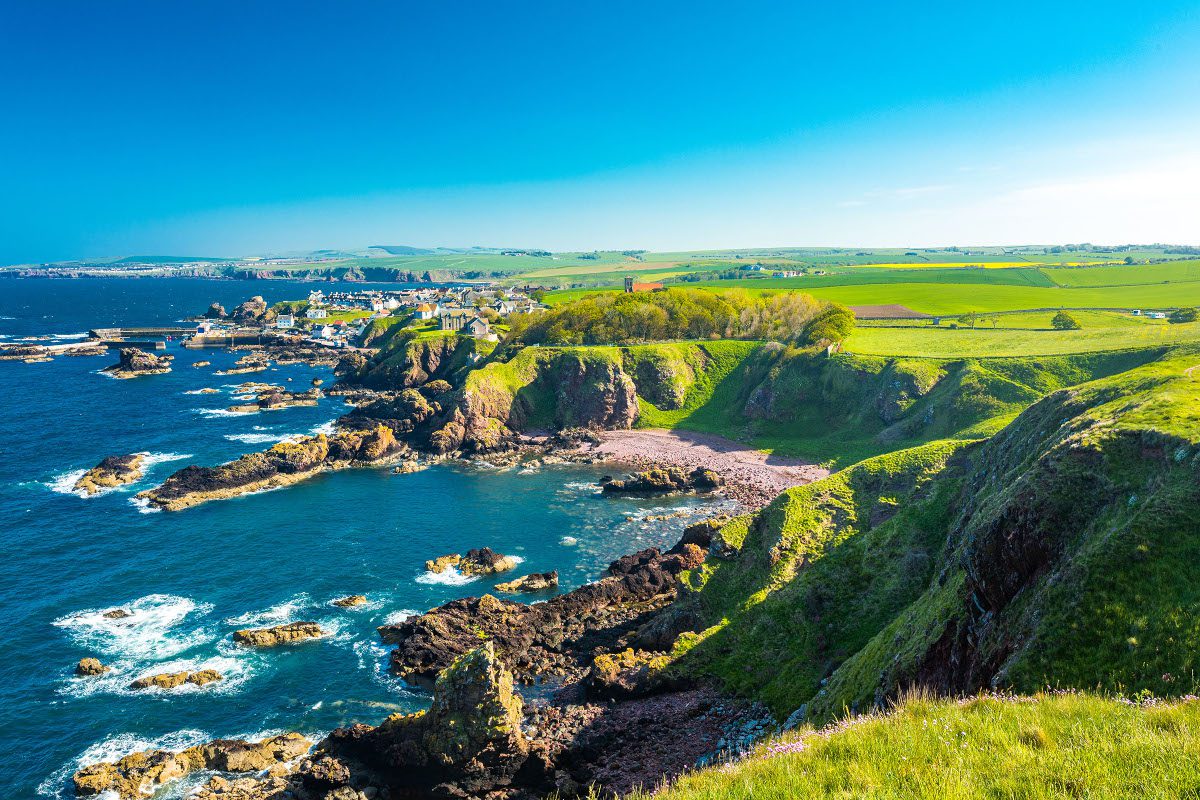
Scientists warn that the way forward for our oceans and local weather objectives depends upon reconnecting the ecological threads that maintain coastal habitats collectively.
The group behind it says the examine delivers essentially the most complete report back to date of how coastal habitats in temperate areas operate not in isolation, however as interconnected methods – an idea generally known as ecological connectivity.
“Coastal habitats like oyster reefs, saltmarshes, kelp forests and seagrass meadows are sometimes handled as separate entities in coverage and restoration, however in actuality, they’re tightly certain collectively by the flows of water, life, and power,” stated lead writer Professor Joanne Preston, Institute of Marine Sciences on the College of Portsmouth, one of many teams concerned within the examine, which was introduced on the Worldwide Seascape Symposium II. “To fulfill our world local weather and biodiversity targets, we have to restore the complete seascape.”
Printed in NPI Ocean Sustainability to coincide with World Ocean Day and the mid-point of the UN Decade on Ecosystem Restoration, the paper makes the case that reconnecting these habitats is prime to repairing the harm brought on by centuries of degradation, and to attaining worldwide targets beneath the Kunming-Montreal International Biodiversity Framework, Paris Settlement, and the Sustainable Growth Objectives.
Dr Philine zu Ermgassen, Altering Oceans Group, College of Edinburgh stated, “ecological connectivity permits organisms, vitamins, sediment, and power to maneuver between completely different marine habitats. These exchanges drive essential ecosystem companies – from carbon storage to water filtration, coastal safety to fishery productiveness.”
The analysis compiles proof from world temperate areas displaying that habitat co-location persistently improves ecosystem service supply. In California, for instance, seagrasses develop extra robustly when adjoining to oyster reefs. On the US east coast within the Chesapeake Bay area, oyster beds dramatically improve water readability and nutrient elimination. Moreover, in New Zealand, kelp-derived carbon boosts fish populations in fjords.
“Linked habitats are extra productive, extra resilient, and extra useful to folks,” stated co-author Alison Debney, Estuaries and Wetlands Programme Lead at ZSL. “Restoring remoted patches isn’t sufficient. We have to suppose like the ocean – fluid, linked, dynamic – and we have to act at scale.”
In response, the authors suggest a proper definition of seascape restoration: the concurrent or sequential restoration of a number of habitats to rebuild useful, resilient, and related marine ecosystems.
They name for a shift away from “feature-based” conservation approaches towards holistic, connectivity-based planning. This consists of updating marine protected space (MPA) frameworks, growth insurance policies, and restoration funding standards to account for the worth of ecological hyperlinks throughout habitats.
“We’re at a important second,” stated Professor Preston. “The UN Decade on Ecosystem Restoration and the Decade of Ocean Science give us the instruments and momentum. However except we restore the seascape as an entire – the complete mosaic of habitats and their connections – we danger lacking the targets set by policymakers.”
The examine outlines clear suggestions to policymakers, together with:
- Mainstreaming seascape connectivity into local weather and biodiversity insurance policies
- Integrating restoration objectives throughout land-sea interfaces
- Recognising the function of connectivity in local weather mitigation and adaptation
- Updating environmental assessments to judge ecosystem service supply on the seascape scale
“We have to view coastal habitats as interconnected methods,” stated co-author Rosalie Wright, Blue Marine Basis. “Our fragmented coverage and regulatory approaches should transition to holistic, seascape-scale pondering. Addressing these boundaries will allow the urgently wanted restoration of our coastlines.”
This work straight helps Goal 2 of the International Biodiversity Framework, which requires not less than 30 per cent of degraded coastal and marine ecosystems to be beneath efficient restoration by 2030, particularly enhancing connectivity and ecological operate.
The findings come amid rising concern over the collapse of marine habitats in temperate zones. Over the previous two centuries, the UK alone has misplaced as much as 95 per cent of its oyster reefs, 90 per cent of its seagrasses, and huge expanses of saltmarsh. These losses jeopardise not solely biodiversity but additionally carbon storage, fish shares, and coastal safety.
Restoring at scale and in a method that mirrors the ecological realities of the coast presents a robust nature-based answer to the interlinked crises of local weather change, biodiversity loss, and air pollution.
Because the world gathers momentum round ocean restoration, the message from the science is unequivocal: seascape-scale restoration shouldn’t be non-obligatory. It’s important.
This newest work represents “two years of labor by a global staff led by the College of Portsmouth, with help from ZSL and College of Edinburgh”.

